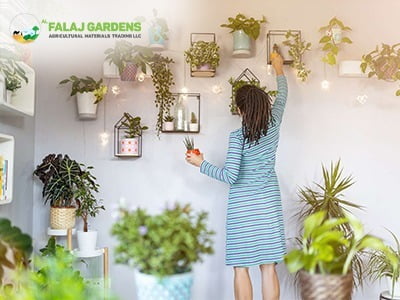The practice of cultivating a variety of plants that you would normally cultivate outside is known as indoor gardening. Unlike many outdoor gardens where the growing season is determined by climate, in an indoor garden you may more easily regulate circumstances such as temperature and availability of foods including fruits, vegetables, herbs, and tropical plant species all year round.
Plants for Indoor Horticulture
It’s common knowledge that some plants thrive best indoors. Among them are:
Plants: Certain vegetables thrive when grown inside. These consist of tomatoes, lettuce, spicy peppers, and carrots.
Herbal remedies: Herbs that thrive in a sunny spot indoors include basil, parsley, chives, mint, and thyme.
Plants with low light: Choose low-light species such as snake plants, spider plants, and certain ferns to establish a low-maintenance tropical jungle in a shaded corner of your home.
Plants that prefer humidity. If you’re looking for plants to thrive in a bathroom or for a terrarium, think about begonias, ferns, and peace lilies.
Typical Indoor Gardening System Types
The kind of plants you wish to cultivate, your budget, the amount of space you have available, and your aesthetic preferences will all influence the indoor planting system you choose. Some popular varieties of indoor gardening systems are listed below.
Systems Based on Soil
Enables you to cultivate plants in potting mix-filled containers. It is the most affordable alternative and most similar to classic, uncomplicated outdoor gardening. It is frequently used for growing an herb garden or showcasing a variety of tropical plants.
Aquaponics Frameworks
With hydroponic gardens, plants can be grown without soil in water. Essential nutrients are present in the water, along with substrates such coconut coir, vermiculite, and perlite. Although it costs a little more than conventional soil-based systems, it makes the most of available space, uses less water, and generates fast-growing, robust, and highly delicious plants.
Hydroponic Frameworks
While it is not as popular, aquaponics is comparable to hydroponics and offers many of the same advantages. Fish are kept alive in the water using these technologies. Their excrement is rich in nutrients that support the growth of the plants. If this isn’t too gross for you, then get ready for an initially more expensive setup and make sure that the vegetation you choose will thrive in this moist climate (leafy greenery is a common choice).
Airborne Plants
This cutting-edge hydroponic method, instead of completely immersing plant roots in water, mists them with nutrient-infused water. With the help of this technique, plants can absorb as much nutrition as possible, resulting in rapid growth and high harvests. It is, however, expensive and difficult to put up.
Aquariums
If you want to grow a variety of humidity-loving plants in a small space, consider creating a glass terrarium. You might choose aesthetically pleasing but low-maintenance plants. There should be a terrarium to fit any enthusiast because they are available in a broad variety of sizes and costs.

